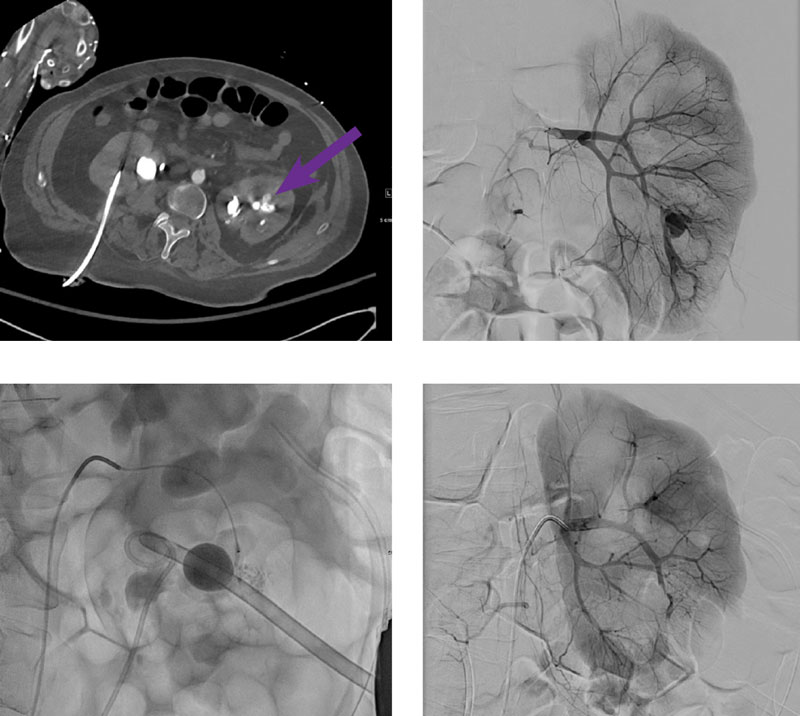Post-PCNL renal bleed embolization
Courtesy of Dr. Rahul Patel I Mt. Sinai Hospital, NY
Presentation
35-year-old male with recurrent multidrug resistant pyelonephritis/UTI in the setting of bilateral staghorn calculi and a left ureteral stone, presented with large volume hemorrhage after removal of percutaneous renal access post left nephrostolithotomy, with temporary balloon tamponade of the hemorrhagic tract via placement of a 20 Fr Foley catheter within the tract.
Post-PCNL CT angiogram demonstrates an 11 mm left renal lower pole pseudoaneurysm immediately adjacent to the 20 Fr Foley catheter within the nephrostomy tract.
Intervention
5 Fr left common femoral artery access was obtained. An angled guide catheter was advanced into the left main renal artery and angiography was performed demonstrating a left renal lower pole pseudoaneurysm. A 2.8 Fr Progreat Microcatheter was advanced into a 5th order anterior lower pole left renal artery branch with its catheter tip positioned immediately proximal to the pseudoaneurysm. 0.2 mL of Obsidio Embolic was injected into the pseudoaneurysm and feeding branch until the feeding branch was filled. The Foley cath was left in the tract with the balloon deflated for the duration of the procedure.
Outcome
Post-intervention angiography from the left main renal artery demonstrates complete stasis in the anterior lower pole feeding branch and no residual filling of the pseudoaneurysm, with preservation of at least 90% of the left renal parenchyma. Two weeks post-procedure, a left ureteral stent was placed, and the left percutaneous nephrostomy Foley catheter was removed without evidence of additional bleeding.

Results from case studies are not necessarily predictive of results in other cases. Results in other cases may vary.
